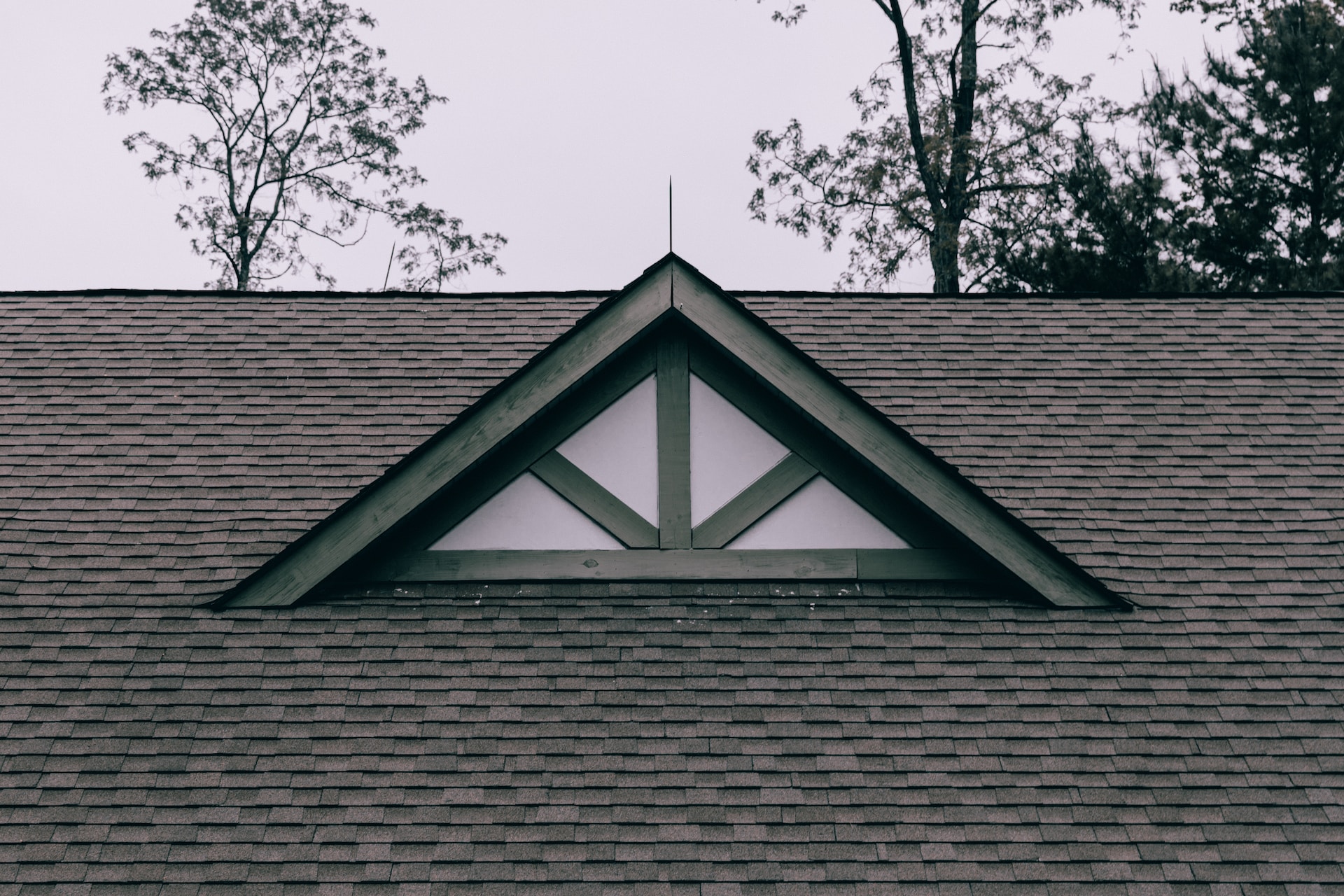This informative article written by our expert roofers will discuss the differences between steep and low-slope roofing systems.
You’ll also learn about the benefits and considerations of each option, helping you make an informed decision when choosing the right roofing system for your needs.
So, let’s dive in and understand the critical distinctions between these two types of roofs.
Steep-Slope Roofing Explained
This section’ll delve into steep-slope roofing and how it differs from low-slope roofing.
Steep-slope roofing refers to roofs with a pitch greater than 3:12, meaning the roof rises at least 3 inches for every 12 inches of horizontal distance.
This type of roofing offers several benefits.
Firstly, it allows for better water drainage, reducing the risk of leaks and water damage.
Additionally, steep slope roofs provide better ventilation, preventing moisture and mold buildup. Steep-slope roofing materials include asphalt shingles, metal, clay or concrete tiles, and wood shakes.
These materials are selected for their robustness, ability to withstand severe weather conditions, and aesthetic charm.
Overall, steep-slope roofing is popular due to its functional and aesthetic advantages.
Advantages of Steep-Slope Roofing
Moving on to the advantages of steep-slope roofing, it offers numerous benefits for homeowners and building owners.
Here are four key advantages:
- Enhanced durability: Steep-slope roofing systems are engineered to endure challenging weather conditions, encompassing heavy rainfall, snowfall, and strong winds. The steep incline facilitates effective water drainage, minimizing the potential for leaks and water damage.
- Increased aesthetic appeal: High-pitched roofs provide an extensive array of design possibilities, enabling homeowners to customize the look of their property. This can significantly enhance curb appeal and increase the overall value of the building.
- Longer lifespan: Steep-slope roofs tend to have a longer lifespan than low-slope roofing systems. This is due to the superior materials used, such as asphalt shingles, metal, or slate, known for their durability and longevity.
- Versatility in material selection: Diverse materials, such as asphalt shingles, metal panels, clay or concrete tiles, and natural slate, can be utilized in the construction of steep-slope roofing systems. Such adaptability empowers homeowners to select the material that aligns most closely with their preferences, financial considerations, and the local climate.
Low-Slope Roofing: An Overview
Now, let’s delve into the next subtopic, where we’ll provide an overview of low-slope roofing.
Low-slope roofing refers to roofs with a pitch of less than 3:12. The materials used for low-slope roofing include built-up roofing (BUR), modified bitumen, and single-ply membranes such as EPDM, PVC, and TPO. BUR consists of multiple layers of asphalt and reinforcing felts, while modified bitumen is a blend of asphalt and rubberized modifiers.
Single-ply membranes are made of synthetic materials and are easier to install. The installation process for low-slope roofing typically involves cleaning the roof surface, applying a base layer, installing the roofing material, and then adding protective surfacing.
When installing low-slope roofing systems, it is crucial to ensure proper drainage and consider factors such as wind uplift and thermal movement.
Benefits and Considerations of Low-Slope Roofing
Before we explore the benefits and considerations of low-slope roofing, let’s understand the differences between steep-slope and low-slope roofing.
Steep-slope roofs have a pitch more significant than 18 degrees, while low-slope roofs have a pitch below 18 degrees.
Now, let’s dive into the benefits and considerations of low-slope roofing:
- Cost-effective: Low-slope roofing materials are often more affordable than steep-slope materials, making them a cost-effective choice for many homeowners.
- Versatility: Low-slope roofs provide adaptability, supporting a variety of roofing materials like asphalt, metal, and single-ply membranes. This flexibility allows for diverse options in both design and functionality.
- Accessibility: The gentle slope of these roofs simplifies accessibility for maintenance and repairs, lowering the risk of accidents and facilitating regular inspections.
- Energy efficiency: With appropriate insulation and reflective coatings, low-slope roofs have the potential to enhance energy efficiency and decrease heating and cooling expenses.
Maintenance of low-slope roofs is relatively simple, involving regular inspections for debris, damage, ponding water, and addressing any issues promptly to prevent further damage.
Choosing the Right Roofing System for Your Needs
Let’s consider the factors involved in choosing the right roofing system for our needs.
When selecting a roofing system, several factors need to be taken into account:
- Consider the slope of the roof. Steep-slope roofs typically require different materials and installation techniques compared to low-slope roofs.
- Consider the climate and environmental conditions in your area. This includes factors such as temperature, wind, and precipitation. Different roofing systems have different levels of resistance to these elements.
- Consider the budget and lifespan of the roofing system. Some systems may have a higher upfront cost but offer longer-term durability and lower maintenance requirements.
- Addressing any specific challenges or requirements unique to your property, such as architectural style or local building codes, is essential.
Considering these factors, you can make an informed decision and choose the right roofing system for your needs.
